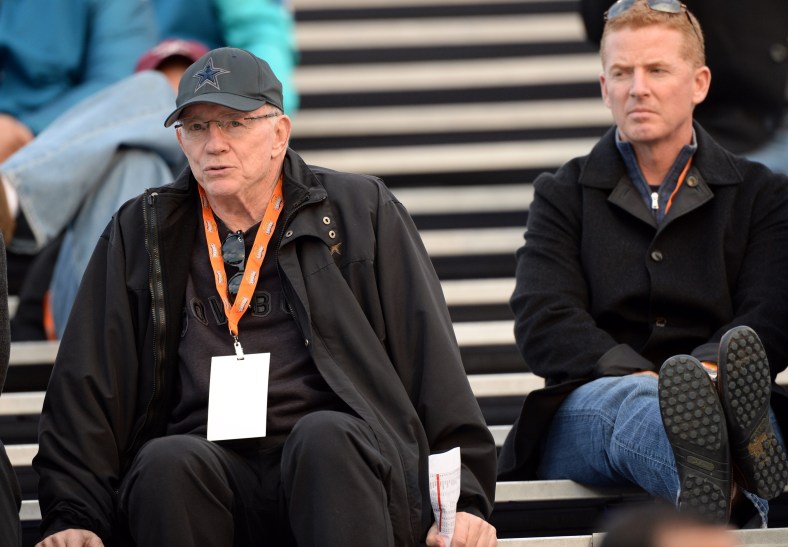
Former Dallas Cowboys running back DeMarco Murray accounted for 37 percent of the team’s yardage output last year. He led the league in rush attempts, rushing yards and total yards. He was also named NFL’s Offensive Player of the Year.
So when Murray decided to sign with the division-rival Philadelphia Eagles, the expectation had to be that the Cowboys would work hard to find an upper-echelon replacement. That’s where Minnesota Vikings running back Adrian Peterson came into play. The future Hall of Famer has not made it a secret that he would love to play in Dallas. He’s also not keen on the idea of returning to Minnesota after the perception that that organization didn’t support him during his entire child abuse scandal.
Unfortunately for Peterson, the Cowboys have not shown much interest in trading for him.
This led some to believe that Dallas would then look for a replacement for Murray in the draft. After all, the only running back addition for the team leading up to the annual event in Chicago was an injury-plagued Darren McFadden in free agency.
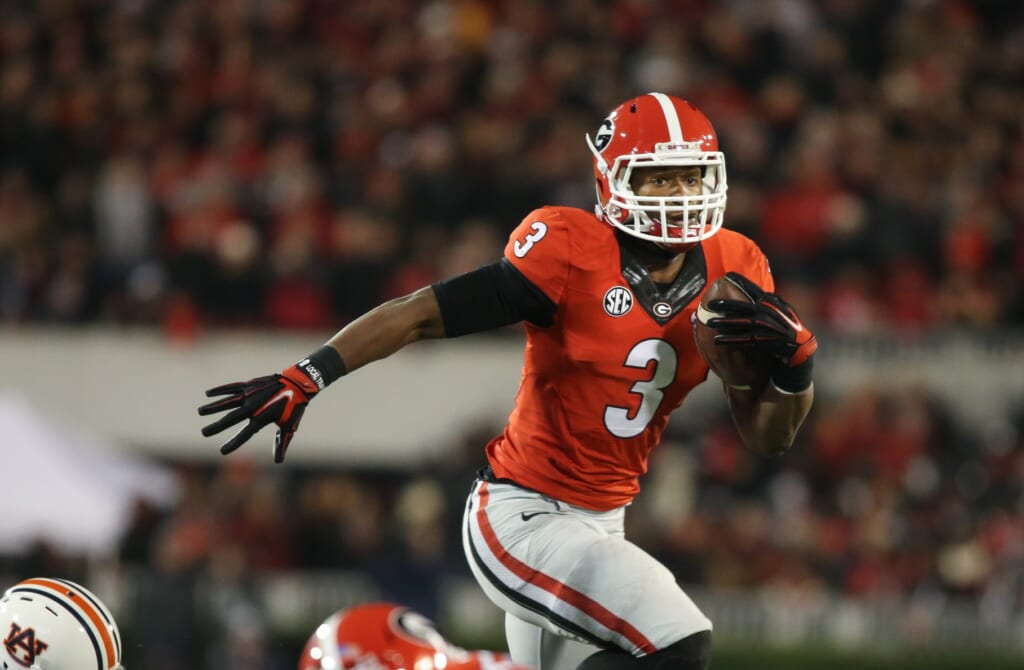
Courtesy of USA Today: No one should be surprised that Dallas came out of Day 1 without a RB.
The first round of the draft played out without Dallas adding a running back. And in reality, that was perfectly fine for everyone involved. Both Todd Gurley and Melvin Gordon went off the board well before the Cowboys picked. They also added a high-upside cornerback in Byron Jones with the 27th pick. No one will complain about that selection three years down the road.
It was the second round in which many figured Dallas would look at a running back in one of the deepest drafts at that position in years. When the Cowboys found themselves on the clock with the 60th pick, Indiana’s Tevin Coleman, Miami’s Duke Johnson and Northern Iowa’s David Johnson were all on the board. Any of these running backs would have figured to be the team’s long-term solution.
It didn’t happen.
Instead, Dallas made the highly-criticized decision to pick up a top-10 talent in former Nebraska pass rusher Randy Gregory, who dropped all the way to the bottom of the second due to off-field issues and a recent failed drug test.
Jason Garrett Confident Cowboys Have Good Environment for … http://t.co/P6KqNgiTb5 #NFL via @JesseReed78 pic.twitter.com/Ch5t5vLBfH
— Sportsnaut (@Sportsnaut) May 4, 2015
On the field, Gregory is going to be a great asset with Greg Hardy and Demarcus Lawrence in the Cowboys front seven. Off the field, he brings a tremendous amount of baggage with him.
Still, it was hard to question the team’s decision to eye top-10 value with the 60th pick. If Gregory gets his house in order off the field, he’s going to be an elite player.
The mid rounds also came and went with Dallas passing up on running backs. It reached for former Florida offensive tackle Chaz Green in the third round. Considering the team’s two book ends at tackle, Doug Free and Tyron Smith, this selection didn’t make a whole lot of sense. Though, it’s possible Green could be seen as the heir-apparent to Free at right tackle. He can also play the role of swing tackle early in his career.
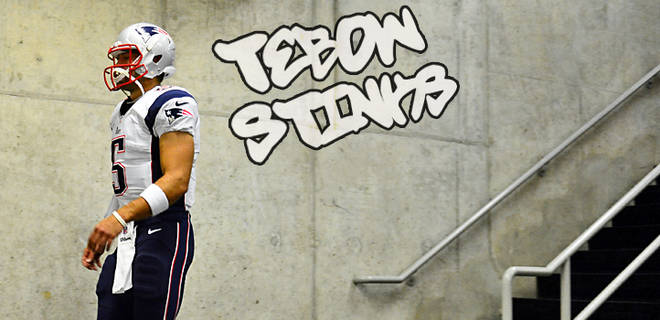
Courtesy of USA Today Sports: Mike Davis would have been an intriguing mid-round option.
By selecting Green, who many had slated to go later than the third round, Dallas passed up on a whole host of running back options. Florida’s Matt Jones, Michigan State’s Jeremy Langford and Mike Davis of South Carolina all went off the board in the picks following the selection of Green.
Personally, the biggest issue I had with Dallas passing up on a running back came in the fourth round when it selected Minnesota inside linebacker Damien Wilson. Wilson isn’t going to be much more than a depth option moving forward, and his former Gopher teammate David Cobb was still on the board.
As one of the most physical running backs in the draft, Cobb seemed to fit what Dallas is building on offense. His ability to run between the tackles could have been a perfect fit behind that dominating offensive line. Instead, Cobb went to the Tennessee Titans at the top of the fifth round.
Read what NFL.com wrote about Cobb, and tell me he wouldn’t have been a good fit in Dallas:
Powerful, compact runner with a low center of gravity. Efficient and decisive. Makes defenders miss with slight movement and hand usage. Won’t succumb to arm tackles. Gained 54 percent of his yardage after contact from 2013-2014. Patient runner who gets the most from his runs. Has good speed in open field for a back his size. Balance is his friend. Smooth change-of-direction with little wasted motion. Gets low and finishes with leg drive. When he smells the end zone, he wants to eat.
Three prospects who will "exceed" their #NFL Draft stock: RB David Cobb/Minn, WR Justin Hardy/ECU and FS Ibraheim Campbell/Northwestern.
— Phil Savage (@PhilSavage) April 29, 2015
The report went on to compare Cobb to New York Jets running back Stevan Ridley. Though, I would call him a poor man’s Marshawn Lynch.
In passing up on some of these talented running backs, Dallas showed faith in both its offensive line and the trio that will be vying for touches in training camp. Faith in one of these aspects might be warranted, while faith in the other could very well be blind.
Dallas invested first-round picks on the offensive line in three of the four drafts prior to this year. And all three have panned out. Tyron Smith is legitimately one of the top left tackles in the NFL. Center Travis Frederick came on like gangbusters during his first season in 2013, while 2014 first-round pick Zack Martin put up an All-Pro performance at guard as a rookie.
These three players enabled the Cowboys offensive line to finish the 2014 campaign as one of the best in the business. According to Pro Football Focus (subscription required), that unit finished as the second-best run-blocking offensive line in the NFL this past year.
Remember, Murray had not done much prior to 2014. Once he was able to run behind a dominant offensive line, that’s when the newest member of the Eagles took off. Some could even argue that Dallas’ offensive line played a larger role in Murray’s success than the running back himself. But that’s a debate for another time.
With Murray out of the equation, Dallas is going to give three running backs an opportunity to earn the starting gig.
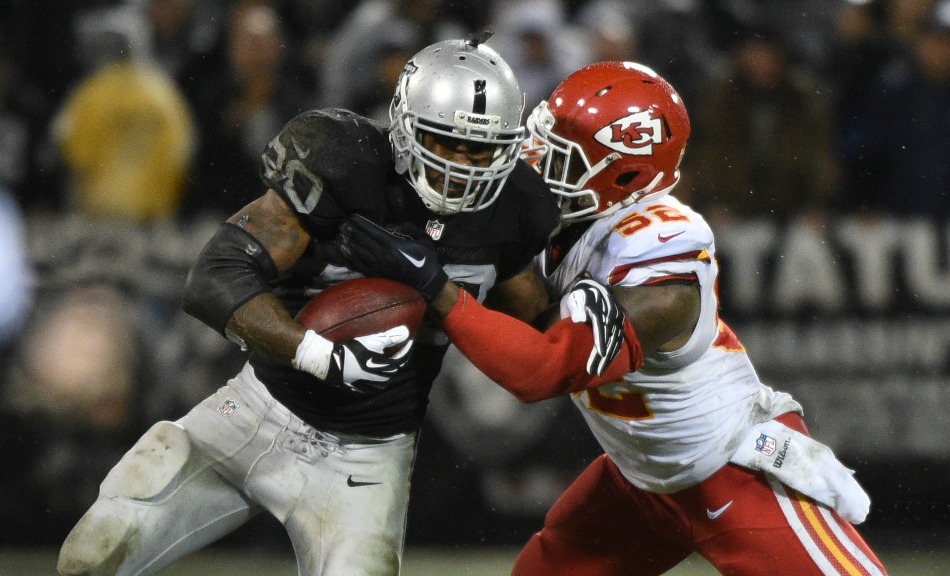
Courtesy of USA Today Sports: What does Darren McFadden have left?
We mentioned it signed McFadden back in March. The former No. 4 overall pick of the Oakland Raiders back in 2008 has been among the most disappointing selections at his position in the NFL over the years. It’s not for a lack of talent. When 100 percent healthy, McFadden has what it takes to lead an offense. The issue here is that he’s missed 32 games in seven seasons. That’s nearly 30 percent of all possible games during his career.
In fact, 2014 represented the first time that McFadden has played a full 16-game schedule. Unfortunately, that didn’t end all too well for him. The 27-year-old running back averaged just 3.4 yards per rush on 155 attempts. We have no idea if McFadden will ever return to form, whatever that previous form might have been.
The true wild card here is former Arizona Cardinals second-round pick Ryan Williams, who has attempted just 58 regular season rushes in four seasons. The Virginia Tech product was highly regarded entering the NFL draft in 2011, but multiple devastating injuries saw his career hit a standstill. He suffered a ruptured patella tendon in his right knee in the preseason that year, and was never really able to rebound. Myriad of injuries since forced the Cardinals to cut ties with him completely. Williams spend last season on the Cowboys practice squad. If Williams is ever able to show he’s healthy, he could be a hidden gem here.
Then you have Joseph Randle. We could almost literally write a 2,000-word piece on Randle’s off-field issues. But suffice it to say, they are rather extensive. On the field, the Oklahoma State product has shown himself to be a pretty darn good player. He averaged a ridiculous 6.7 yards per attempt on 51 rushes last year.
If any one of these players can come anywhere near producing what we saw from Murray last year, it would be a minor miracle.
Realistically, that’s not what the Cowboys are going to expect. Instead, they have to look at maybe two of them stepping up into a committee situation in the backfield. In fact, Dallas’ 2015 season may rely on it.
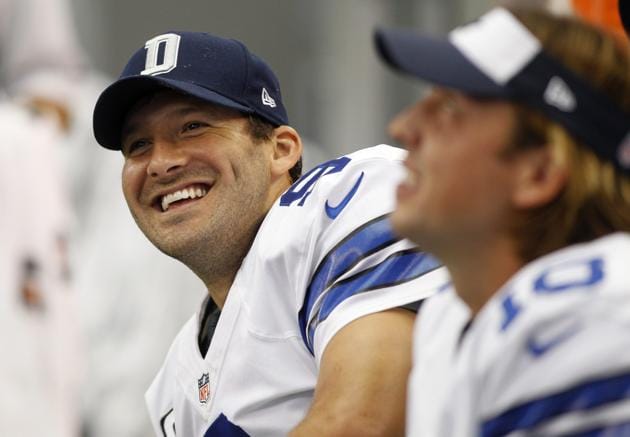
Courtesy of USA Today Sports; When he has balance on offense, Romo is one of the league’s best.
We have seen the Cowboys attempt to go Air Coryell in the past. We have also seen that fail at every turn with Tony Romo. They need to have some resemblance of balance on offense, otherwise the veteran quarterback will show mistake-prone tendencies. Like pretty much every quarterback, the more Romo throws, the more mistake-prone he becomes. Over the past two years, Romo has thrown 10 interceptions in the 10 games he’s attempted 35-plus passes. In the 20 games he hasn’t, the Pro Bowler has tallied just nine interceptions. This isn’t a coincidence. Give Romo a decent running game, and he’s among the best in the business.
That needs to happen if the Cowboys are going to repeat as NFC East champs and compete for a conference title. If not, Jason Garrett and company are going to find themselves sorely disappointed when January comes calling.
Photo: USA Today Sports